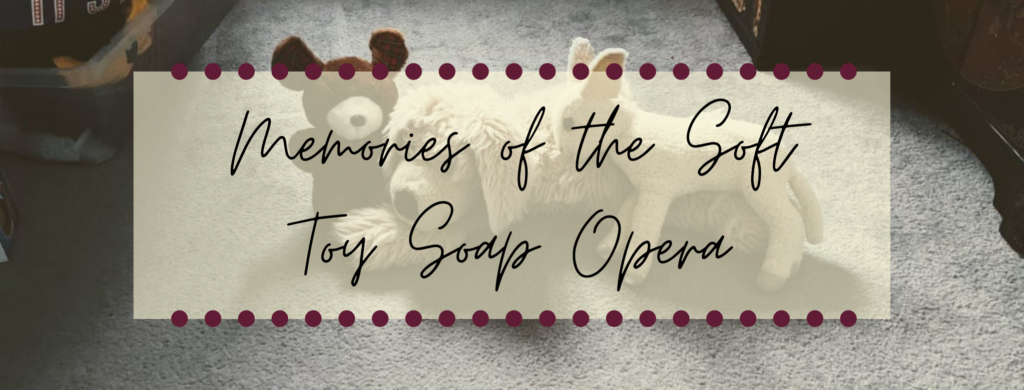It used to be that when we talked about brands, we generally meant a company with a recognisable logo, slogans, and so on. I don’t know about you, but my mind instantly flips to Coke whenever someone mentions branding, even when there’s nothing else in the conversation to suggest that we’re talking about fizzy beverages or the classic sign of Christmas (“holidays are comin’, holidays are comin’). But, while I still automatically go down the “big company with logo” route, social media has brought about a rise in people becoming brands and, importantly for my research, authors becoming brands. So, since this is a big factor in both my practice as an author and my interests as a researcher, I figured I could talk about it here. Yup, for once, I’ve actually got a properly formed plan for what I’ll be blogging about for the next few weeks – thinking about all things author branding, from a bit of the history, how to form your author brand, and then looking at my experience with author branding. This week, my focus is is drifting towards my academic side, giving a base for what an author brand is, how author branding became a thing, and why we care.
Person or brand?
Everyone technically has a personal brand, whether they know it or not, as the way we conduct ourselves gives others an impression of who we are. This may not necessarily be a correct impression, nor is it likely to be one that encompasses your whole self. We all tend to be different people in different situations, because social masking is a thing and there are spaces where aspects of our identity take greater importance. But this is the key thing in personal branding – it’s all about how other people see you and how you can manage these perceptions to indicate value. If you’re presenting at a conference, for example, you might wear a more formal outfit to indicate authority, while if you work at Disney World, you might talk at a higher pitch to create the impression that you are enthusiastic and full of child-like fun. In online spaces, however, this gets especially interesting, particularly as authors are increasingly expected to connect with their readership through social media (which I’ve mentioned here and here).
“Because I am not physically present, I am thus reduced to my documented interests and behavior. Complex processes of self formation are thereby reified by a few formulae and data points in some electronic storage facility.”
Williams, 2005
That quote, while 15 years old and drawn from an article focused on the potential for social progression through the internet, highlights a lot of why personal branding online has become so important as we’ve moved online. If you think of Facebook ads, for example, they are targeted towards you based on the information you have already supplied. Your gender, your sexuality, your age, your interests… they all shape how Facebook sees you. But we do the same thing in the other direction. We try to shape what we see by telling the social media sites we use what we’re interested in, or by engaging in online communities that fit one of our niches. On Twitter, for example, I engage with book Twitter and the academic community. The tweets I put out and the content I like tend to fit within those margins, both shaping the content I get and the impression I give out.


For a regular person on the internet, there are strengths and weaknesses to this narrowing of the self online. On the one hand, you get to see more of what you want to see, but on the other, you’re put in an echo chamber, hearing the same views and voices. You can control what version of you future employers, ex-boyfriends, and hated high school rivals may see, but this means you may be unable to truly represent the life you live. For an author branding themselves, it’s a little more complicated.
A little author branding background
From what I’ve seen in my research, the concept of branding came from the US in the 1800s, wild west style. Ranchers would brand their livestock as a way of identifying them, making them much harder to steal and much more distinctive if lost. There are some sources who suggest it came earlier than this – citing the markings used by brick layers in ancient Egypt, for example – but I quite like flow of branding cattle becoming branding commercially. (This isn’t an academic essay, so I’ll go with what I like best) Commercial branding came in around the early/mid-20th century, with emphasis being placed on the unique attributes of the products being sold. It’s not just a product, it’s an M&S product. The brand enabled companies to build their reputation by making sure their product seemed distinctly theirs – you weren’t going to get that item that way from another brand.
Personal branding kind of filtered on from there. There does seem to be some debate over who came up with the idea of personal branding – I found an academic article that suggests that, while Tom Peters popularised the term in a 1997 article, an earlier possible origin was a 1959 book by Erving Goffman (Philbrick and Cleveland, 2015), but this is contradicted by an online post by Gaurav Gulati, who suggests that these texts were preceded by a 1937 book by Napoleon Hill. The Philbrick and Cleveland article suggests that personal branding rose in importance during the 70’s, as this was a time when there were many layoffs in the US and the average worker could no longer rely on bigger corporations to give them a guaranteed job for life. This grew into the idea that there was satisfaction to be gained in self-sufficiency and then, of course, we reach the age of the internet, where everyone can construct the self they want to be.
The author brand is most likely not the first form of personal branding you think of. That space is probably reserved for celebrities and influencers – names that could sell you anything from dish soap to vagina-scented candles. But, let’s not lie here, author names do sell things. Those things are just typically lots of words strung together and presented nicely for your consumer pleasure, but it’s still a fact that seeing an author name on the cover – say Stephen King, for example – can make a purchase happen even if the customer has no other prior knowledge of the book. Who hasn’t had a parent or loved one choose a book as a Christmas present purely based on the fact that they’re 99% sure you have other books from that author on your shelves?
The idea that an author is a brand can be an uncomfortable notion for some, as there is this feeling that it implies that the author has “sold-out”, or that their work cannot both be marketed in a commercial way and viewed as art. I once had a lecturer rant about the fact that we, as writers, shouldn’t be aiming for publication and profit, instead we should write for the art of it. Great talk from a lecturer paid to teach us creative writing and who had, in fact, published a book or two. Pretty sure they were crime genre books too, not the esteemed “literary” texts he promoted as most worthy. He doesn’t work at my uni anymore, thank goodness. But, according to a 2019 article by Véronique Collange and Mathilde Pulh, this view is also echoed in reader circles (though these were very small reader circles apparently, and therefore may not be generalisable). Readers in their studies simultaneously judged authors who published prolifically as being too commercial, but relied on particular names to indicate value and trustworthiness. An author brand is therefore a tricky balance to navigate, aiming to draw enough attention to the author self to build that trust, but not so much that they lose the illusion of the classic author genius.
Authors as brands
Obviously we all construct our personal brands to a degree. In the workplace, for example, we want people to get the right impression of us – to believe that we can do whatever we’re saying we can do, that we have the authority to do it, and, hey, it really is worth paying us to do it. A lot of the time, this means mirroring what you expect a person in that role to be. When I first started teaching, I naturally found myself drawing on the examples of all the teachers I had ever admired, both fictional and real. These examples shaped me as a teacher, carving out a distinctive teacher self that would give my students the impression that I knew what I was a teacher and I knew what I was doing.
For an author, there’s a lot of the same thing. We’re all trying to give the impression that we are authors and we know what we’re doing. A lot of the time, this means emphasising our interest in all things book-related and trying to capture the feeling of that illusive author-god figure of old, despite, you know, wanting to be paid for our work and not just doing it for the art. Just fitting that mould doesn’t make a personal brand though. Remember the emphasis on being unique that I mentioned in early commercial branding? Yeah, it’s the same for authors. We’ve got to be distinctive enough that readers want to choose our books, aloof/arty enough that we seem like the traditional author-genius, and engaged enough that readers want to follow our work online. Phew, that’s a lot to do! But in doing so we build our reader community and, you know, get other people to actually read our writing.
So, how do we do this? That’s what I’ll talk about in part two!




Comments
Comments are closed.